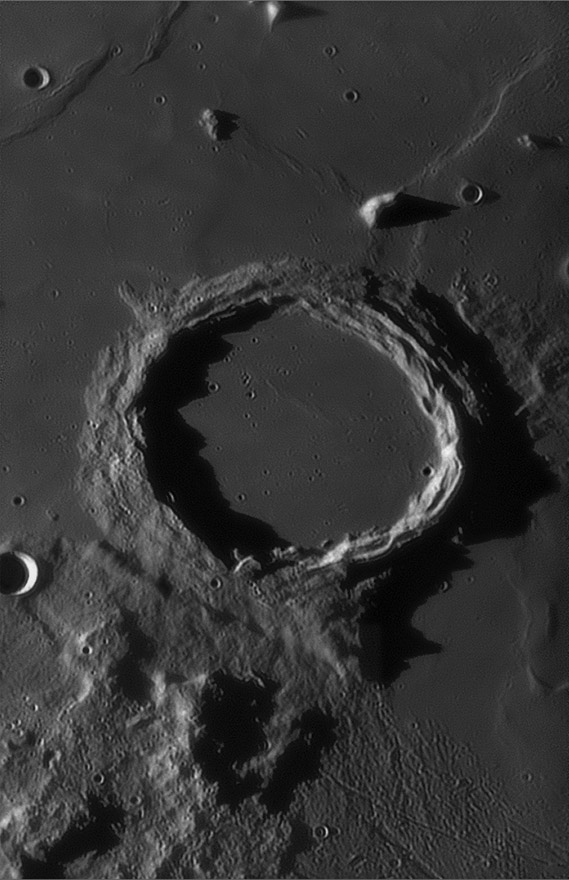
|
image by Damian Peach, U.K.
When we look at images we commonly focus attention on the main feature, here the pitted floor and rim shadows of Damian's excellent view of Archimedes. But I often find extra information in the background of the image, in all the stuff going on around the center of interest. But before going outside the rim notice the mare ridge that crosses part of Archimedes' floor. It is uncommon, perhaps even rare, for a ridge to occur on a crater floor. The LRO QuickMap Path toolshows that this is not just a mare ridge but a boundary, perhaps a fault, with the northern side being 40 m higher than the south. Just north of Archimedes is a 1.4 km high peak, formerly designated Archimedes Epsilon, that is a triple junction with mare ridges spaced about 120° apart. Mare ridges have never been studied in as much detail as other lunar landforms, but they tend to mark buried topography such as basin inner rims and crater rims. The long ridge extending to the upper right is probably part of an Imbrium Basin inner ring, but I don't know what caused the other two short ridges. On the south side of Archimedes is some rugged, hilly terrain cut by two broad rilles. To the right of that mountainous material is much lower topo roughness that looks like short squiggly ridges. This terrain is cut by much narrower rilles. On the QuickMap image many small pits occur, suggesting that this unit could be ejecta from the formation of Archimedes - almost everywhere else it has been covered by mare lavas.
Chuck Wood
Note: The boxes of the 21st Century Lunar Atlas were delivered to my house on Wednesday - tomorrow they start being mailed out in the sequence that the 125 pre-orders were received. I am sorry that most people will receive their Atlas after Christmas, but I hope it will prove to have been worth the wait. I sadly announce that there is one known error - who will find it first?
Technical Details
Sept 8, 2012, 03:36 UT. Big telescope, great technique, etc...
Related Links
Rükl plate 22
21st Century Atlas chart 18.
Damian's 2012 Lunar images
Yesterday's LPOD: More Moore
Tomorrow's LPOD: Not the End of the World
Register, Log in,
and join in the comments.
|




